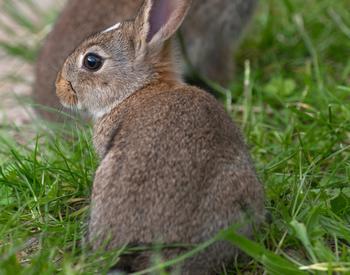The following images relate to the Rabbit Coat Color Genetics project.
Please view all articles for context and explanation of these images.

The following images relate to the Rabbit Coat Color Genetics project.
Please view all articles for context and explanation of these images.
The dominant D allele produces a dense coat color, meaning the coat will appear as determined by the B gene. The d allele represents a dilute coat color. When a rabbit has a dilute genotype, a black base will appear as blue and a chocolate base will appear as lilac. The D allele is considered the wild-type gene.
The A gene has three different alleles, the A allele causes the agouti pattern, the at allele causes the tan pattern, and the a allele causes the self-pattern. The agouti pattern A is considered the wild-type allele, which appears as a multicolored speckled coat with brown, black and white.
The E gene has 5 alleles with Ed allele as the most dominant and the e allele as the most recessive. Es allele stands for partial extension and appears as steel (see next image). The ej allele stands for different extension per hair shaft and appears as Japanese brindling. The e allele stands for no extension and appears as fawn. E stands for normal extension, which means that coloring would depend on the B, D, A and C genes.
Hair shaft coloring depends on both the A and the E genotype. The agouti allele (A) causes banding of the hair shaft with light- and dark-colored sections giving an overall speckled appearance. The Es allele stands for partial extension and appears as steel. There are two types of steel: silver-tipped steel and gold-tipped steel.

Ask Extension is a way for you to get answers from the Oregon State University Extension Service. We have experts in family and health, community development, food and agriculture, coastal issues, forestry, programs for young people, and gardening.